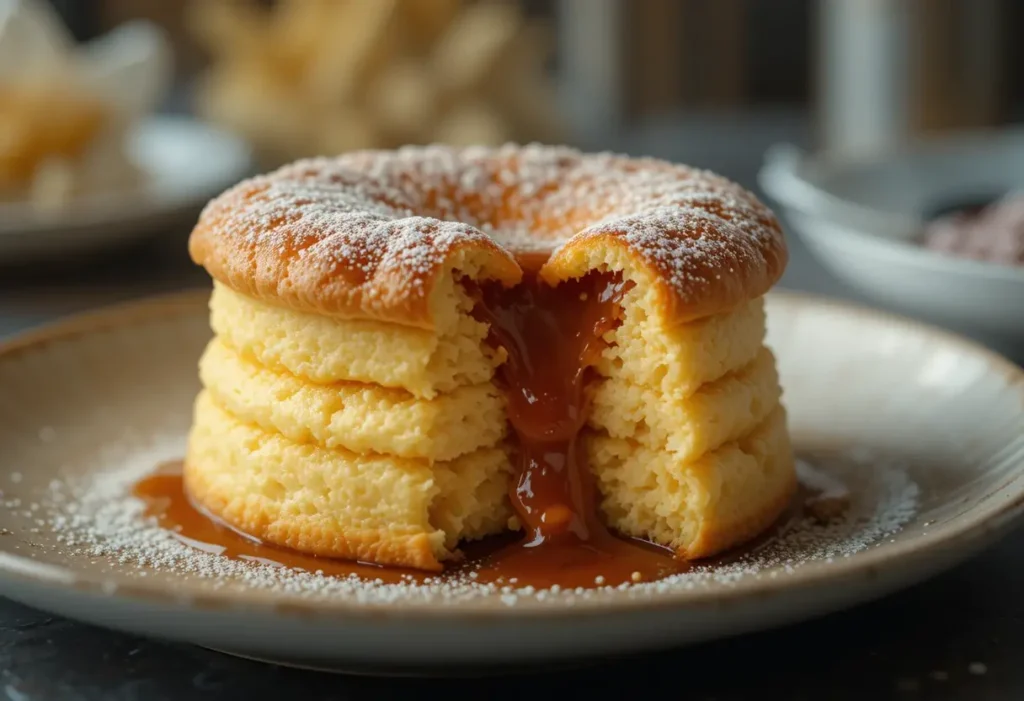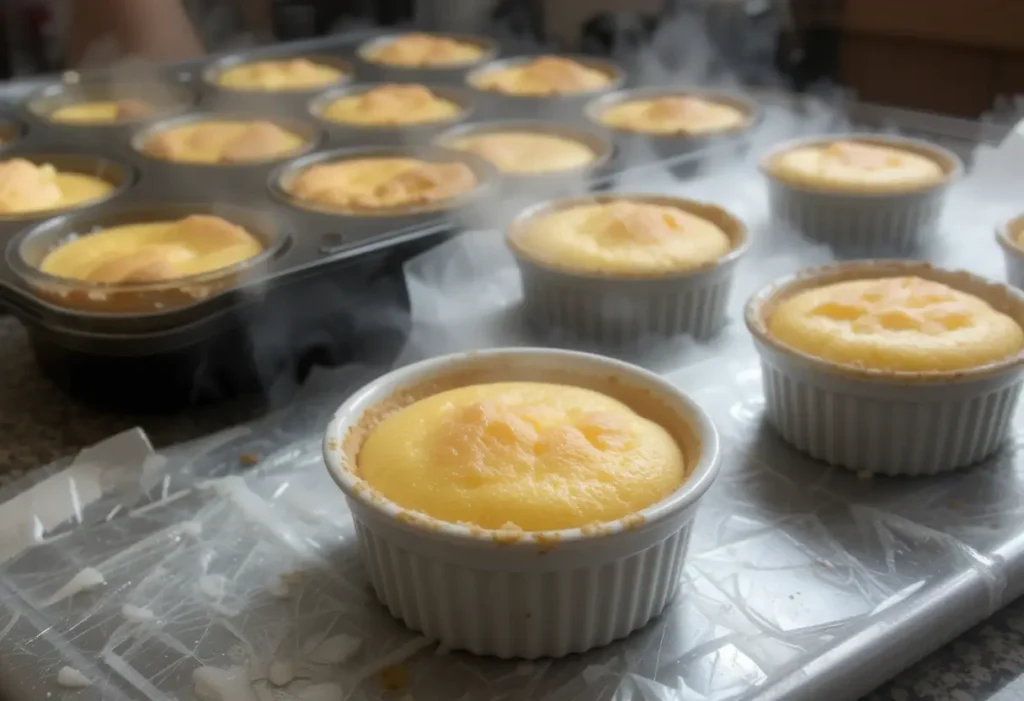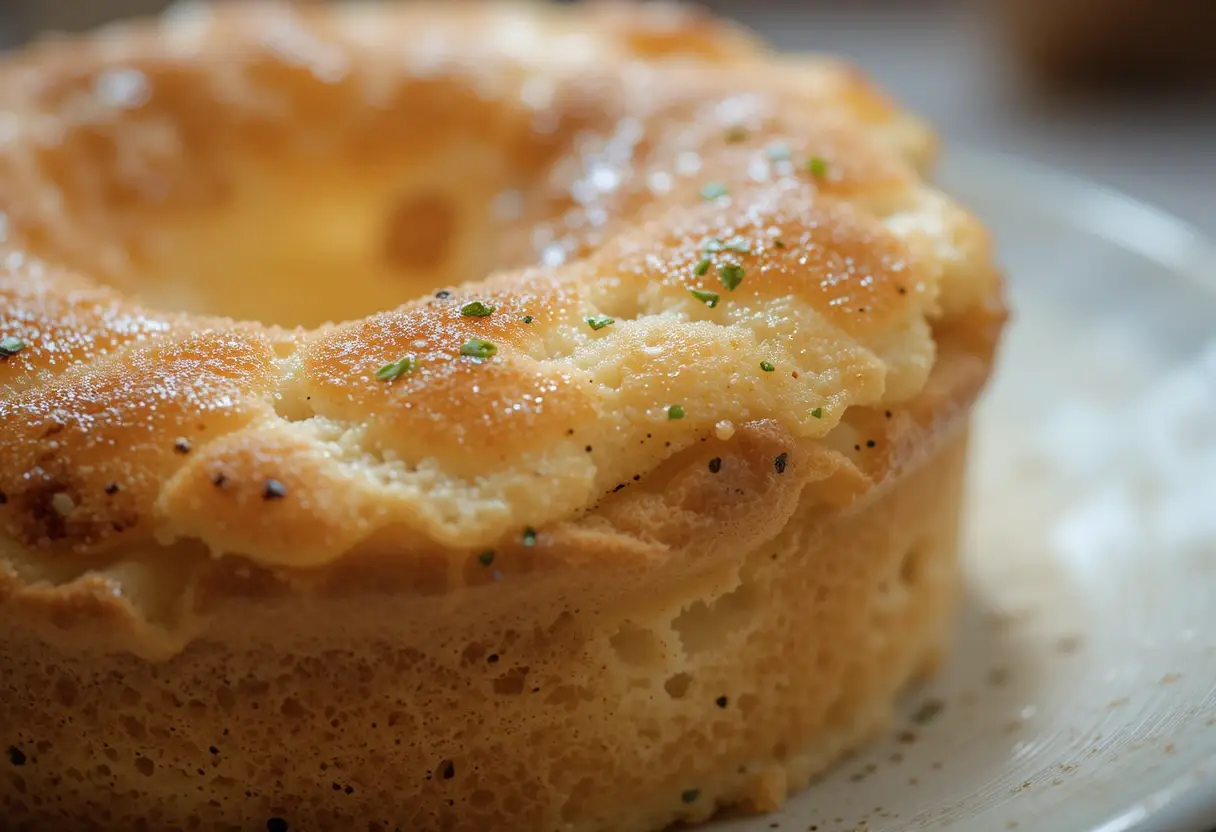There’s something magical about a perfectly risen soufflé. It’s a culinary masterpiece that combines lightness and richness in one glorious bite. However, achieving this perfection can often feel intimidating, especially for home cooks. In this guide, we’ll explore everything you need to know to master the art of making soufflés. From the basics of what a soufflé is to the secrets of creating a dish that rises to perfection, this comprehensive guide will set you up for soufflé success.
Let’s start by understanding the basics—what exactly is a soufflé, and how did it become one of the most celebrated dishes in the culinary world?
Table of contents
Understanding the Basics of a Soufflé
What is a soufflé?
A soufflé is a classic French dish known for its light, airy texture. The word “soufflé” comes from the French word “souffler,” which means “to puff” or “to blow.” And that’s exactly what happens when you bake it—it puffs up beautifully in the oven.
At its simplest, a soufflé is made up of two main parts:
- The Base: This part is full of flavor and often made with a sauce like béchamel, chocolate, or fruit purée, depending on whether you’re making a savory or sweet soufflé.
- Whipped Egg Whites: These give the soufflé its signature fluffy texture. The egg whites are carefully folded into the base to create an airy mixture.

When you bake a soufflé, the heat causes the air trapped in the egg whites to expand, making the dish rise into its famous puffy shape. However, soufflés are quite delicate. As soon as you take them out of the oven, they begin to deflate, so they need to be served immediately.
Soufflés are incredibly versatile. You can make savory versions with ingredients like cheese or spinach, or you can go the sweet route with chocolate, lemon, or other fruits.
A brief history of the soufflé
The soufflé has an interesting history that goes all the way back to 18th-century France. It was first popularized by Marie-Antoine Carême, one of the most famous chefs of his time. Carême made soufflés a centerpiece of elegant French cooking and helped turn them into a symbol of culinary skill.
In the beginning, soufflés were mostly served at fancy banquets for the upper class. Over time, though, they became more common as recipes were shared in cookbooks, making it easier for people to try them at home.
Different regions in France also put their own spin on the dish. For example, savory soufflés with local cheeses became a favorite in some areas, while sweet versions like chocolate soufflés gained fans around the world. Today, the soufflé is still seen as an impressive dish, both for its taste and for the skill it takes to make it perfectly.
The Perfect Preparation Method for a Soufflé
Creating a soufflé is an art that demands precision, patience, and the right techniques. Whether you’re crafting a sweet or savory version, this step-by-step guide will ensure you achieve an airy and beautifully risen dish. Follow these instructions and master this culinary classic!
Prepare Your Ingredients
Start by prepping your ingredients. Measure everything accurately and separate the egg whites from the yolks while the eggs are cold—it’s much easier. Allow the egg whites to come to room temperature for better whipping. For tips on egg usage and whipping techniques, check out our guide to black pepper and parmesan soufflés.
Preheat the Oven
Set your oven to the specified temperature (usually 375–400°F for most soufflés). Preheating is crucial for a consistent rise. Place a baking sheet in the oven to ensure even heat distribution, especially when working with delicate recipes like these sweet potato brulées.
Prepare the Soufflé Dish
Grease the dish with butter and dust it with sugar for sweet soufflés or breadcrumbs for savory ones. This step prevents sticking and helps the soufflé rise evenly. Need inspiration? Our savory shrimp burrito wrap guide provides insight into balancing flavors.
Make the Base
For savory soufflés, begin with a roux by melting butter and whisking in flour. Gradually add milk to form a thick, smooth sauce. Sweet soufflés may start with a chocolate base or fruit purée. If you enjoy experimenting with creamy textures, you might also like our recipe for scalloped potatoes with cheese powder.
Incorporate the Yolks
Stir the egg yolks into the warm base, one at a time, for added richness. Allow the base to cool slightly before combining it with the egg whites. For dishes that also emphasize a silky base, see our pesto langostino recipe.
Whip the Egg Whites
Use a clean, dry bowl to whip the egg whites until stiff peaks form. Add a pinch of salt or cream of tartar for stability. For sweet soufflés, incorporate sugar gradually. For more insights into whipping techniques, explore our guide on avocado brownies.
Fold the Egg Whites into the Base
Gently fold the whipped egg whites into the base in small batches. Use an under-and-over motion with a spatula to maintain the airiness of the mixture. Learn more about folding techniques from our French toast pancakes guide.
Fill the Dish and Bake
Pour the mixture into the prepared soufflé dish, filling it three-quarters full. Run your thumb around the inside edge of the dish to create a groove—this ensures an even rise. For additional presentation tips, check out our pineapple chili salmon recipe.
Resist the Urge to Peek
Avoid opening the oven door during baking. A sudden drop in temperature can cause the soufflé to collapse. The same principle applies to baking fluffy loaves like our zucchini banana bread.
Serve Immediately
Once out of the oven, serve the soufflé right away while it’s still puffed up. Timing is everything in preserving that perfect rise, just like in our mini chicken pot pies.
Tips for Mixing and Handling Ingredients
Use Room-Temperature Egg Whites
They whip better and create a stable foam.
Clean Equipment is Key
Ensure your bowl and whisk are grease-free to avoid interference with the whipping process.
Fold Gently
Avoid overmixing to maintain the air in the batter.
Don’t Let the Batter Sit
Bake the soufflé immediately to prevent air bubbles from deflating.
For more baking secrets and troubleshooting advice, don’t miss our seafood boil sauce guide.
Techniques for the Perfect Rise
A soufflé rises thanks to air trapped in the whipped egg whites and the steam generated during baking. As the mixture heats, the air expands, and the proteins set, creating a stable structure. Learn how to maximize height and structure by exploring our ultimate banana bread tips.
Mastering the soufflé might seem daunting, but with practice and attention to detail, you can create a dish that’s as impressive as it is delicious!
Baking the Perfect Soufflé
Optimal temperatures and times
Temperature and timing are critical when baking a soufflé. Most soufflés bake at 375°F to 400°F (190°C to 200°C). This temperature range ensures that the heat penetrates the batter evenly, helping the soufflé rise while setting its structure.

For smaller individual soufflés, bake for 12–15 minutes, but for larger ones in a single dish, the baking time ranges from 25–30 minutes. A good indicator that your soufflé is ready is when the top is golden brown, puffed up, and slightly firm to the touch. However, the center should still jiggle a little when you gently shake the dish—it shouldn’t be overcooked and dry.
To make sure you’re timing it right:
- Always preheat the oven.
- Place the soufflé dish on a preheated baking sheet to help it rise evenly.
- Use a timer to avoid overbaking, which can cause the soufflé to collapse too quickly once it’s out of the oven.
How oven type affects the outcome
Not all ovens are created equal, and they can significantly impact your soufflé. Here’s how:
- Conventional Ovens: These work well for soufflés but may have uneven heat distribution. Place the soufflé on the middle rack for the best results.
- Convection Ovens: These circulate hot air, cooking food more evenly. However, they can brown the top of a soufflé faster, so you may need to reduce the temperature by about 25°F.
- Gas Ovens: Gas ovens can sometimes have inconsistent heat, especially on the top rack. To compensate, use an oven thermometer to check accuracy and rotate the dish halfway through baking if needed.
Advanced Soufflé Variations
Savory vs. sweet soufflés
Soufflés can go either savory or sweet, depending on your preference. Here’s how they differ:
- Savory Soufflés: These are made with a base like béchamel sauce and often include cheese, vegetables, or proteins. Examples include spinach and cheese soufflé, smoked salmon soufflé, or even a mushroom soufflé.
- Sweet Soufflés: These are dessert-focused and use ingredients like chocolate, fruit, or vanilla in the base. Classic examples are chocolate soufflé, lemon soufflé, or raspberry soufflé.
Innovative flavor combinations
If you want to experiment, here are some creative flavor ideas to try:
- Savory:
- Blue cheese and walnut soufflé.
- Caramelized onion and Gruyère soufflé.
- Truffle and Parmesan soufflé.
- Sweet:
- Matcha green tea soufflé.
- Passionfruit and white chocolate soufflé.
- Pumpkin spice soufflé with a cinnamon sugar crust.
These twists can turn a classic soufflé into something truly memorable.
Troubleshooting Common Soufflé Problems
Even with careful preparation, soufflés can present some challenges. Here are a few common problems and how to solve them:
- The soufflé didn’t rise.
- Cause: The egg whites weren’t whipped enough or were overfolded.
- Fix: Ensure the whites are beaten to stiff peaks and folded gently into the base. Use room-temperature whites for better results.
- The soufflé collapsed immediately after baking.
- Cause: It was undercooked, or the oven door was opened too early.
- Fix: Avoid opening the oven until the soufflé is done, and ensure it’s fully baked before removing it.
- The top browned too quickly.
- Cause: The oven was too hot.
- Fix: Lower the temperature slightly and bake for a longer time. Check that your oven thermostat is accurate.
- The batter was too dense.
- Cause: The egg whites were overmixed, or not enough air was incorporated.
- Fix: Fold the whites carefully into the base and stop as soon as the mixture is combined.
- The soufflé tasted bland.
- Cause: The seasoning or flavoring was insufficient.
- Fix: Be generous with salt in savory recipes or sugar and flavorings in sweet ones. A soufflé relies heavily on its flavor base, so make it count!
With these solutions, you’ll be ready to troubleshoot any issues and serve a flawless soufflé every time.
FAQs About the Secret to a Good Soufflé
What are the key ingredients in a soufflé?
The key ingredients for a perfect soufflé are eggs, which provide structure and airiness; a flavorful base (such as béchamel, chocolate, or fruit purée) that adds richness; and seasonings or sweeteners that enhance the taste. For sweet soufflés, sugar is essential, while for savory ones, cheese or herbs add depth. Every ingredient works together to create the signature fluffy texture.
How long should you whip the eggs for a soufflé?
You should whip the egg whites until they form stiff peaks, which usually takes 3–5 minutes with an electric mixer on medium-high speed. You’ll know they’re ready when the whites are glossy and hold their shape when you lift the whisk. Be careful not to overwhip, as this can cause the whites to lose stability and become grainy, making it harder for the soufflé to rise properly.
Can a soufflé be prepared in advance?
Soufflés are best prepared and baked immediately, as the air bubbles in the whipped egg whites start to deflate over time. However, you can prepare the base ahead of time and refrigerate it for up to a day. When you’re ready to bake, simply whip the egg whites, fold them into the base, and bake right away for the best results.
Why did my soufflé fall?
It’s normal for a soufflé to deflate slightly after it comes out of the oven, but if it collapses entirely, it could be due to a few reasons:
- The egg whites weren’t whipped or folded properly, resulting in less air to support the structure.
- The soufflé was undercooked, so it didn’t set enough to hold its shape.
- The oven door was opened too early, causing a sudden temperature drop.
To prevent this, make sure your egg whites are whipped to stiff peaks, bake the soufflé fully, and avoid peeking until it’s done.
What are some savory variations of a soufflé?
Savory soufflés are incredibly versatile! Some popular variations include:
- Cheese Soufflé: Made with Gruyère, cheddar, or Parmesan cheese.
- Spinach and Cheese Soufflé: A combination of sautéed spinach and a flavorful cheese like feta or Gruyère.
- Mushroom Soufflé: Sautéed mushrooms blended into a béchamel base for a rich, earthy flavor.
- Smoked Salmon Soufflé: A luxurious option that pairs well with dill or chives.
- Herb Soufflé: Features fresh herbs like parsley, thyme, or chives for a light and fragrant taste.
Is there a vegan option for soufflés?
Yes, vegan soufflés are possible! While traditional soufflés rely on eggs for their rise and texture, you can use plant-based alternatives. Aquafaba (the liquid from canned chickpeas) is a great substitute for whipped egg whites, as it mimics their airy texture when whipped. For the base, plant-based milks, vegan butter, and nutritional yeast (for savory flavors) or sweeteners (for desserts) can be used. Although vegan soufflés might not rise as dramatically as traditional ones, they can still be light and delicious with the right techniques.
Conclusion
Mastering the art of making a soufflé may seem intimidating, but with the right techniques and a bit of patience, anyone can create this iconic dish. From carefully whipping egg whites to balancing flavors in the base, each step plays a crucial role in achieving that perfect rise and texture. Whether you’re preparing a rich cheese soufflé or a decadent chocolate version, the key is precision and timing. Don’t be afraid to experiment with flavors and variations to make it your own. With practice, your soufflés will impress and delight every time you serve them. So, get baking and enjoy!

